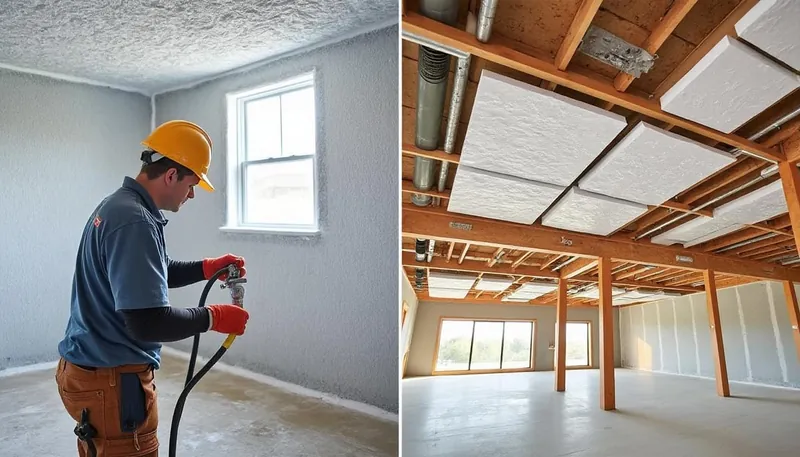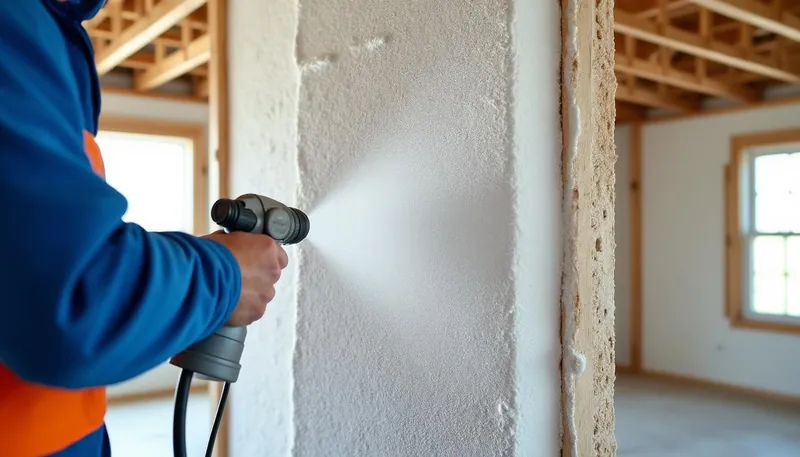Foam insulation has become a buzzword in the construction and remodeling world, and for good reason! As homeowners are increasingly searching for energy-efficient solutions to reduce their utility bills, the interest in this particular type of insulation has skyrocketed. Foam insulation’s unique properties not only help maintain constant indoor temperatures but also play a significant role in lowering energy consumption. Green building strategies often celebrate the advantages of foam insulation, showcasing it as an essential element in modern, sustainable construction.
With a variety of options available, foam insulation can be tailored to meet diverse project needs. From sealing off air leaks to providing superior thermal resistance, there are numerous benefits associated with its use. Builders and architects alike appreciate its versatility, but many homeowners still have questions. How does foam insulation actually work? What types are available, and in what scenarios should each type be used? Let’s dive in and explore these facets of foam insulation in detail.
Understanding Foam Insulation
At its core, foam insulation is a type of insulation material made primarily from materials like polyurethane or polystyrene. This innovative product is used widely for its superior thermal performance and air-sealing capabilities. Foam insulation is distinct from traditional products like fiberglass and cellulose, as it offers an airtight seal that effectively prevents air infiltration, which is crucial for maintaining energy efficiency in residential and commercial buildings.
There are two main types of foam insulation: closed-cell foam and open-cell foam. Closed-cell foam comprises tightly packed cells that are not connected to each other; hence, it creates a strong barrier against moisture, making it perfect for use in areas prone to water damage. On the contrary, open-cell foam consists of cells that are broken, allowing air to fill them. While providing a higher R-value per inch than traditional insulation, it is lighter and more flexible, making it suitable for soundproofing.
How Foam Insulation Works
Foam insulation is not just effective; it is also clever in its mechanics. The way it operates can be broken down into several components:
- Resistance to Conduction: Heat always strives to move from warmer to cooler areas. Foam insulation has a dense structure that significantly slows down this heat transfer, helping to maintain consistent indoor temperatures.
- Resistance to Convection: Convection occurs when heat is transferred through air or liquid. The structure of foam insulation minimizes air movement, curtailing heat loss or gain.
- Resistance to Radiation: Although it’s not the primary form of heat transfer in most homes, some foam boards can come with reflective surfaces, offering protection against radiant heat.
- Air Barrier Creation: Properly installed foam insulation creates a continuous air barrier, sealing leaks that might otherwise allow heated or cooled air to escape.
These attributes make foam insulation an excellent choice for various applications, significantly enhancing energy efficiency.

The Types of Foam Insulation
One of the primary advantages of foam insulation is the wide variety available, each catering to specific needs. Understanding the differences between types can greatly influence your selection process.
| Type of Foam | Material | R-value | Common Uses |
|---|---|---|---|
| Closed-cell Foam | Polyurethane | 6 to 7 per inch | Basement walls, crawlspaces, roofs |
| Open-cell Foam | Polyurethane | 3.5 to 4 per inch | Interior walls, soundproofing |
| Spray Foam | Polyurethane | 6 to 7 per inch | Sealing gaps, attics, exterior walls |
| Foam Board Insulation | Polystyrene, Polyiso | 4 to 6.5 per inch | Exterior sheathing under siding, insulation for foundations |
Each type has applications that set it apart, but your specific project requirements must dictate the choice. The goal is to limit heat transfer while still considering factors like humidity levels, structural challenges, and budget.
Applications and Benefits of Foam Insulation
Foam insulation doesn’t just excel in cutting utility bills; it brings a heap of practical benefits to the table. Here are some prominent applications:
- Residential Insulation: Homeowners are turning to foam insulation in walls, attics, roofs, and basements due to its energy-saving properties.
- Commercial Applications: Businesses utilize foam insulation for commercial roofs, office buildings, and warehouses, enhancing energy efficiency and comfort.
- Moisture Protection: Due to closed-cell foam’s water resistance, it’s often used in areas prone to dampness, safeguarding structural integrity.
- Soundproofing: Open-cell foam serves as an excellent solution for sound insulation. It minimizes noise transmission, making it beneficial in schools, studios, or apartments.
The benefits don’t end there. This insulation type also provides a better return on investment than traditional insulation due to its durability and resistance to mold and pests. It’s for these reasons that many leading manufacturers, such as Owens Corning, Johns Manville, and CertainTeed, advocate for foam insulation’s effective use in modern construction practices.

Installation Process of Foam Insulation
Foam insulation can be installed either by professionals or as a DIY project, depending on your comfort level and the size of the job. Proper installation is critical for effectiveness. Here’s a straightforward guide to help you out:
- Surface Preparation: Ensure the area is clean, dry, and free of any debris.
- Type Selection: Choose the appropriate type of foam insulation based on your specific needs.
- Measurement and Cutting: Measure the areas to insulate and cut foam boards to fit precisely.
- Adhesive Application: Apply adhesive or use spray foam as necessary, ensuring it adheres well to all surfaces.
- Sealing: Once installed, seal all joints and gaps with foil tape or other compatible sealants.
By following these steps, the insulation will not only improve energy efficiency but also significantly enhance comfort inside buildings. It’s also vital to remember to wear proper safety gear, especially when working with spray foam.
Costs and Considerations
While foam insulation offers extensive benefits, it can carry a higher upfront cost compared to alternatives like fiberglass or cellulose. Understanding these costs will help in making informed decisions:
| Type of Insulation | Average Cost (per square foot) | Long-term Benefits |
|---|---|---|
| Foam Insulation | $0.50 – $2.00 | Excellent energy savings, moisture resistance |
| Fiberglass | $0.30 – $1.00 | Lower upfront cost but requires more material for similar R-value |
| Cellulose | $0.40 – $1.50 | Eco-friendly but may settle over time |
Evaluating costs isn’t just about initial investments—consider long-term energy savings and overall home comfort. For many homeowners, the higher upfront costs of foam insulation can lead to considerable savings over time.
What is the main advantage of using foam insulation?
Foam insulation offers superior thermal resistance and air sealing, helping to maintain indoor temperatures and reducing energy costs.
Can I install foam insulation myself?
Yes, many homeowners opt for DIY installation, especially with foam boards. However, spray foam may require professional installation for best results.
How does the cost of foam insulation compare to other types?
Foam insulation tends to be more expensive upfront compared to fiberglass or cellulose, but it often yields better energy savings over time.
Is foam insulation safe for my home?
Yes, when installed correctly and abiding by safety guidelines, foam insulation is considered safe. Just be sure to follow manufacturer instructions for safe use.
What should I consider before choosing foam insulation?
Consider the specific needs of your project, such as moisture levels, type of application, and your budget.

